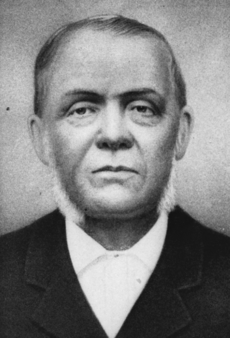Rancho San Juan Cajón de Santa Ana facts for kids
Imagine a huge piece of land, bigger than many towns! That's what a 'rancho' was in old California. The Rancho San Juan Cajón de Santa Ana was one of these very large land grants. It covered about 35,971 acres (or 145.5 square kilometers) in what is now Orange County, California.
In 1837, a leader named Governor Juan Alvarado gave this land to Juan Pacífico Ontiveros. Today, this rancho's land includes parts of the cities you might know, like Anaheim, Fullerton, and Placentia.
Contents
The Story of Rancho San Juan Cajón de Santa Ana
Who Was Juan Pacífico Ontiveros?
Juan Pacífico Ontiveros was born in 1795. He lived until 1877. He was an important person in early California.
He worked as a corporal, which is like a low-ranking officer, at the Mission San Gabriel Arcángel. Later, he became a mayordomo, or foreman, at Mission San Juan Capistrano. This meant he was in charge of the workers and daily tasks there.
In 1825, Juan Pacífico Ontiveros married María Martina Osuna. Her stepfather, Tomás Olivera, also owned a large piece of land called Rancho Tepusquet.
Changes After the Mexican-American War
California used to be part of Mexico. But after the Mexican–American War ended in 1848, California became part of the United States.
The peace agreement, called the Treaty of Guadalupe Hidalgo, said that the United States would respect the land grants given by Mexico. This meant that people like Juan Pacífico Ontiveros could keep their ranchos.
To make sure these land claims were official, the U.S. government created the Public Land Commission in 1851. Juan Pacífico Ontiveros filed a claim for his rancho in 1852. His ownership was officially confirmed, or "patented," in 1877.
Selling Parts of the Rancho
Juan Pacífico Ontiveros started selling parts of his very large rancho. This led to the creation of new towns and communities.
In 1853, he sold about 21,527 acres (87.1 square kilometers) of the rancho to a man named Abel Stearns.
A few years later, in 1855, Ontiveros bought Rancho Tepusquet from his father-in-law. This rancho was located in what is now northern Santa Barbara County. In 1856, he moved there, built a house, and lived there until he passed away.
How Anaheim Was Founded
In 1857, Juan Pacífico Ontiveros sold 1,160 acres (4.7 square kilometers) of his land to George Hansen. Hansen was working for 50 German-American families from the San Francisco Bay Area.
These families wanted to start a new community where they could grow grapes for wine. This land became the city of Anaheim.
Family and New Settlers
Two of Juan Pacífico Ontiveros's relatives, Juan Nicolas Ontiveros and Patricio Ontiveros, stayed on Rancho San Juan Cajón de Santa Ana.
In 1863, Juan Pacífico gave them about 3,900 acres (15.8 square kilometers) of the rancho. However, they did not keep their share for long. In 1864, they sold their land to their brother-in-law, Augustus Langenberger.
In 1865, a man named Daniel Kraemer bought 3,900 acres (15.8 square kilometers) of the rancho. His purchase marked the beginning of many new settlers coming to the area that would become Placentia.


